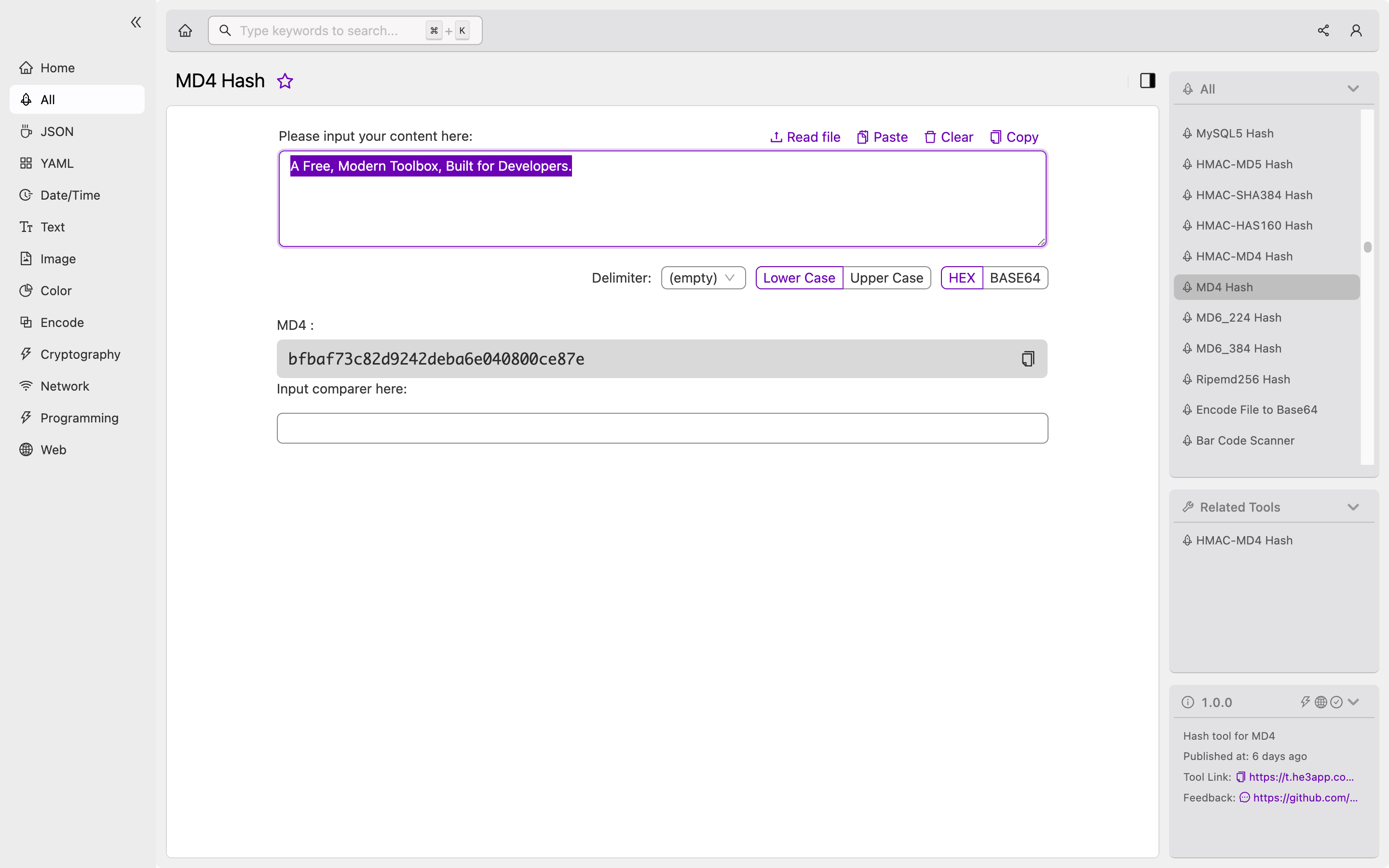Introduction
Data integrity is crucial in any computing system, and cryptographic hash functions like MD4 Hash play a significant role in ensuring it. MD4 Hash is a widely-used message digest algorithm that generates a unique, fixed-size, 128-bit hash value from an input message of any length. This article aims to provide developers with a comprehensive understanding of MD4 Hash, how it works, and its key features.
How MD4 Hash Works
MD4 Hash is a one-way hash function that takes a variable-length message as input and produces a fixed-size hash value. The hash value is unique to the input message, meaning that any change in the input message will result in a completely different hash value. MD4 Hash uses a series of bitwise operations and modular arithmetic to compute the hash value, which can be represented as a 32-digit hexadecimal number.
To compute the MD4 Hash of a message, developers can use various programming languages and libraries such as Python, Java, and OpenSSL. Here’s an example in Python:
import hashlib
message = b'This is a sample message.'
md4_hash = hashlib.md4(message).hexdigest()
print(md4_hash)
# Output: 'befd96fbb3d56c74ca7f44467c57d560'Or you can use MD4 Hash tool in He3 Toolbox (https://t.he3app.com?yk44 ) easily.

Key Features of MD4 Hash
The following table summarizes the key features of MD4 Hash:
| Feature | Description |
|---|---|
| Input Size | Variable-length messages |
| Output Size | Fixed-size 128-bit hash value |
| Collision Resistance | Limited collision resistance, vulnerable to collision attacks |
| Speed | Fast |
Despite its speed and simplicity, MD4 Hash is not suitable for cryptographic purposes due to its vulnerability to collision attacks. Developers should use more secure hash functions such as SHA-256 or SHA-3 for cryptographic purposes.
Scenarios of Using MD4 Hash
MD4 Hash can be useful in various scenarios such as:
- Verifying the integrity of data transmitted between two parties.
- Generating unique identifiers for database records or files.
- Password storage and verification (although not recommended due to its security vulnerabilities).
Misconceptions and FAQs
Misconception: MD4 Hash is secure for cryptographic purposes.
MD4 Hash is no longer considered secure for cryptographic purposes due to its vulnerability to collision attacks. Developers should use newer and more robust hash functions such as SHA-256 or SHA-3 for cryptographic purposes.
FAQ 1: Can MD4 Hash be reversed to obtain the original message?
No, MD4 Hash is a one-way hash function that generates a fixed-size hash value from an input message. It is not possible to obtain the original message from the hash value.
FAQ 2: Is MD4 Hash still relevant today?
While MD4 Hash is no longer recommended for cryptographic purposes, it is still useful for generating checksums and verifying data integrity in various applications.
Conclusion
MD4 Hash is a widely-used message digest algorithm that generates a unique, fixed-size hash value from a variable-length message. It is fast and simple to implement but is no longer suitable for cryptographic purposes due to its vulnerability to collision attacks. Developers should use more secure hash functions for cryptographic purposes, such as SHA-256 or SHA-3.
References:
